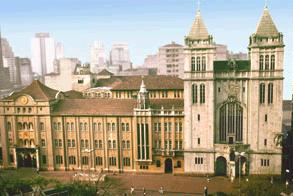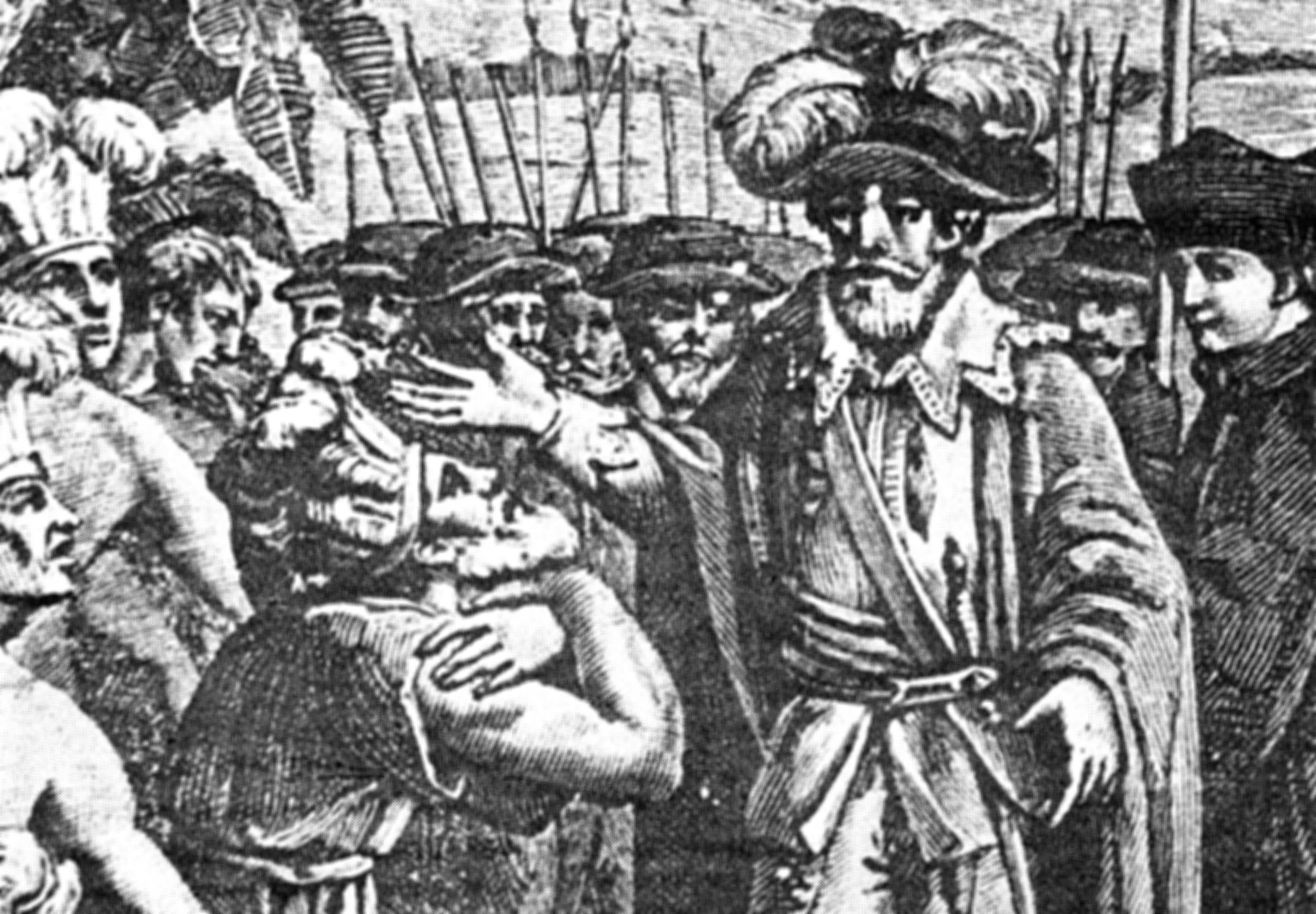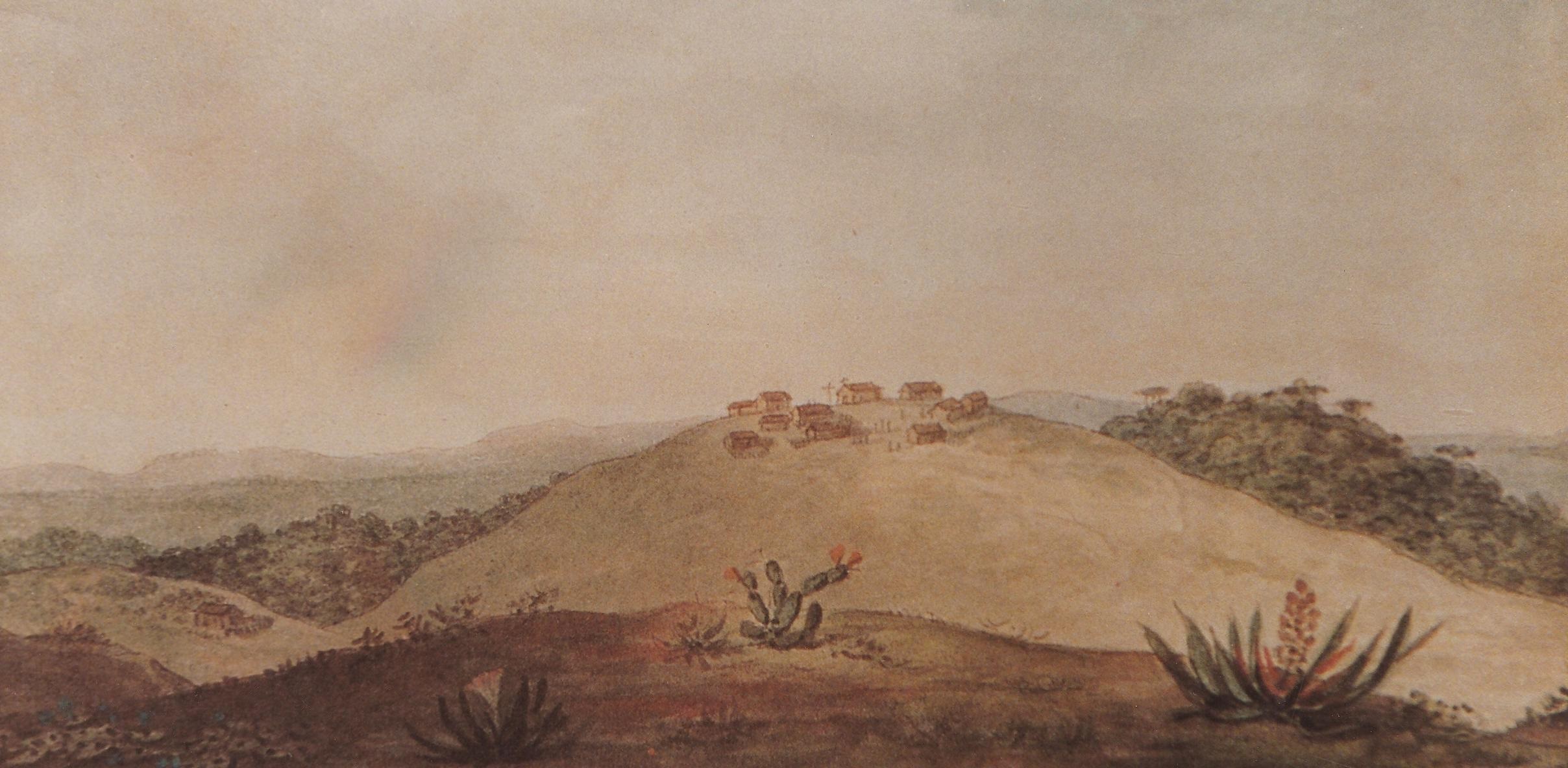|
Brazilian Congregation
The Brazilian Congregation is a monastic congregation of the order of Saint Benedict.''Ann. Pont. 2010'', p. 1426. Founded in 1827, it is a member of the Benedictine Confederation. History The first Benedictines came from Portugal to Brazil in 1581, and the following year founded a monastery at Salvador da Bahia. As new foundations continued to be made, the monastery at Bahia became the provincial headquarters; the abbot served as the Provincial and Visitor. In 1822 Brazil became independent from Portugal, and the Holy See, with the papal seal ''Inter gravissimas'' 1827, ordered the constitution of the Brazilian congregation.L. Brasil e J.P. Müller, DIP, vol. II, col. 1473. However, subsequent anticlerical legislation forbade the Brazilian monasteries to accept novices. By the end of the nineteenth century the Brazilian Congregation had been slowly dying. A change in government policy in 1889 reversed the earlier prohibitions. At that time the entire congregation numbered ... [...More Info...] [...Related Items...] OR: [Wikipedia] [Google] [Baidu] |
Order Of Saint Benedict
, image = Medalla San Benito.PNG , caption = Design on the obverse side of the Saint Benedict Medal , abbreviation = OSB , formation = , motto = (English: 'Pray and Work') , founder = Benedict of Nursia , founding_location = Subiaco Abbey , type = Catholic religious order , headquarters = Sant'Anselmo all'Aventino , num_members = 6,802 (3,419 priests) as of 2020 , leader_title = Abbot Primate , leader_name = Gregory Polan, OSB , main_organ = Benedictine Confederation , parent_organization = Catholic Church , website = The Benedictines, officially the Order of Saint Benedict ( la, Ordo Sancti Benedicti, abbreviated as OSB), are a monastic religious order of the Catholic Church following the Rule of Saint Benedict. They are also sometimes called the Black Monks, in reference to the colour of their religious habits. They ... [...More Info...] [...Related Items...] OR: [Wikipedia] [Google] [Baidu] |
Benedictine Confederation
The Benedictine Confederation of the Order of Saint Benedict ( la, Confœderatio Benedictina Ordinis Sancti Benedicti) is the international governing body of the Order of Saint Benedict. Origin The Benedictine Confederation is a union of monastic congregations that nevertheless retain their own autonomy, established by Pope Leo XIII in his brief "Summum semper" (12 July 1893), subsequently approved by his successors. Pope Pius XII explicitly ordered this union to be regulated by a "Lex Propria", which was later revised after the Second Vatican Council. Organization of the Benedictine Confederation Most Benedictine ''houses'' are loosely affiliated in 19 national or supra-national congregations. Each of these congregations elects its own Abbot President. These presidents meet annually in the Synod of Presidents. Additionally, there is a meeting every four years of the Congress of Abbots, which is made up of all abbots and conventual priors, both of monasteries that are members ... [...More Info...] [...Related Items...] OR: [Wikipedia] [Google] [Baidu] |
Mosteiro Igreja Colegio SaoBentoSP
{{geodis ...
Mosteiro, Portuguese for ''monastery'', may refer to the following places in Portugal: * Mosteiro (Lajes das Flores), a civil parish in the municipality of Lajes das Flores, Azores * Mosteiró (Santa Maria da Feira), a parish in the municipality of Santa Maria da Feira * Mosteiro (Oleiros), a civil parish in the municipality of Oleiros * Mosteiro (Torre de Dona Chama), a village in the parish of Torre de Dona Chama * Mosteiro (Vieira do Minho), a parish in the municipality of Vieira do Minho * Mosteiró (Vila do Conde), a parish in the municipality of Vila do Conde See also * Mosteiros (other) Mosteiros, Portuguese for ''monasteries'', may refer to the following places: __NOTOC__ Cape Verde *Mosteiros, Cape Verde, a town on the island of Fogo *Mosteiros, Cape Verde (municipality), a municipality on the island of Fogo Portugal *Mosteiros ... [...More Info...] [...Related Items...] OR: [Wikipedia] [Google] [Baidu] |
Portugal
Portugal, officially the Portuguese Republic, In recognized minority languages of Portugal: :* mwl, República Pertuesa is a country located on the Iberian Peninsula, in Southwestern Europe, and whose territory also includes the Macaronesian archipelagos of the Azores and Madeira. It features the westernmost point in continental Europe, its mainland west and south border with the North Atlantic Ocean and in the north and east, the Portugal-Spain border, constitutes the longest uninterrupted border-line in the European Union. Its archipelagos form two autonomous regions with their own regional governments. On the mainland, Alentejo region occupies the biggest area but is one of the least densely populated regions of Europe. Lisbon is the capital and largest city by population, being also the main spot for tourists alongside Porto, the Algarve and Madeira. One of the oldest countries in Europe, its territory has been continuously settled and fought over since prehistoric tim ... [...More Info...] [...Related Items...] OR: [Wikipedia] [Google] [Baidu] |
Brazil
Brazil ( pt, Brasil; ), officially the Federative Republic of Brazil (Portuguese: ), is the largest country in both South America and Latin America. At and with over 217 million people, Brazil is the world's fifth-largest country by area and the seventh most populous. Its capital is Brasília, and its most populous city is São Paulo. The federation is composed of the union of the 26 states and the Federal District. It is the largest country to have Portuguese as an official language and the only one in the Americas; one of the most multicultural and ethnically diverse nations, due to over a century of mass immigration from around the world; and the most populous Roman Catholic-majority country. Bounded by the Atlantic Ocean on the east, Brazil has a coastline of . It borders all other countries and territories in South America except Ecuador and Chile and covers roughly half of the continent's land area. Its Amazon basin includes a vast tropical forest, ho ... [...More Info...] [...Related Items...] OR: [Wikipedia] [Google] [Baidu] |
Salvador, Bahia
Salvador ( English: ''Savior'') is a Brazilian municipality and capital city of the state of Bahia. Situated in the Zona da Mata in the Northeast Region of Brazil, Salvador is recognized throughout the country and internationally for its cuisine, music and architecture. The African influence in many cultural aspects of the city makes it a center of Afro-Brazilian culture. As the first capital of Colonial Brazil, the city is one of the oldest in the Americas and one of the first planned cities in the world, having been established during the Renaissance period. Its foundation in 1549 by Tomé de Sousa took place on account of the implementation of the General Government of Brazil by the Portuguese Empire. Centralization as a capital, along with Portuguese colonization, were important factors in shaping the profile of the municipality, as were certain geographic characteristics. The construction of the city followed the uneven topography, initially with the formation of two ... [...More Info...] [...Related Items...] OR: [Wikipedia] [Google] [Baidu] |
Pope Leo XIII
Pope Leo XIII ( it, Leone XIII; born Vincenzo Gioacchino Raffaele Luigi Pecci; 2 March 1810 – 20 July 1903) was the head of the Catholic Church from 20 February 1878 to his death in July 1903. Living until the age of 93, he was the second-oldest-serving pope, and the third-longest-lived pope in history, before Pope Benedict XVI as Pope emeritus, and had the fourth-longest reign of any, behind those of St. Peter, Pius IX (his immediate predecessor) and John Paul II. He is well known for his intellectualism and his attempts to define the position of the Catholic Church with regard to modern thinking. In his famous 1891 encyclical '' Rerum novarum'', Pope Leo outlined the rights of workers to a fair wage, safe working conditions, and the formation of trade unions, while affirming the rights of property and free enterprise, opposing both socialism and laissez-faire capitalism. With that encyclical, he became popularly titled as the "Social Pope" and the "Pope of the Workers", ... [...More Info...] [...Related Items...] OR: [Wikipedia] [Google] [Baidu] |
Maredsous Abbey
Maredsous Abbey is a Benedictine monastery at Maredsous, in the municipality of Anhée, Wallonia, Belgium. It is a founding member of the Annunciation Congregation of the Benedictine Confederation. The abbey was founded as a priory on 15 November 1872 by Beuron Abbey, with the financial support of the Desclée family, who donated some land and paid for the plans and construction of the buildings which were designed by Jean-Baptiste Bethune. In 1878, the priory was raised to the status of abbey by Pope Leo XIII and became a member of the Congregation of Beuron. The abbey was subsequently affiliated with the Congregation of the Annunciation within the Benedictine confederation, 1920. By a pontifical letter of Pope Pius XI dated 12 October 1926 the abbey church was awarded the title of minor basilica. Though various cheeses are products of the abbey's own dairy, Maredsous Beer is no longer brewed there but in the Duvel Moortgat brewery om Flanders which has been authorised to ... [...More Info...] [...Related Items...] OR: [Wikipedia] [Google] [Baidu] |
Basilica And Monastery Of St
In Ancient Roman architecture, a basilica is a large public building with multiple functions, typically built alongside the town's forum. The basilica was in the Latin West equivalent to a stoa in the Greek East. The building gave its name to the architectural form of the basilica. Originally, a basilica was an ancient Roman public building, where courts were held, as well as serving other official and public functions. Basilicas are typically rectangular buildings with a central nave flanked by two or more longitudinal aisles, with the roof at two levels, being higher in the centre over the nave to admit a clerestory and lower over the side-aisles. An apse at one end, or less frequently at both ends or on the side, usually contained the raised tribunal occupied by the Roman magistrates. The basilica was centrally located in every Roman town, usually adjacent to the forum and often opposite a temple in imperial-era forums. Basilicas were also built in private residences and ... [...More Info...] [...Related Items...] OR: [Wikipedia] [Google] [Baidu] |
Olinda
Olinda () is a historic city in Pernambuco, Brazil, in the Northeast Region. It is located on the country's northeastern Atlantic Ocean coast, in the Metropolitan Region of Recife, the state capital. It has a population of 393,115 people, covers , and has a population density of 9,437 inhabitants per square kilometer. It is noted as one of the best-preserved colonial cities in Brazil, and has been inhabited since 1535. As the former capital of the Captaincy of Pernambuco during the colonial era, Olinda has many historical buildings--the center was declared a UNESCO World Heritage Site in 1982--and a rich culture. The ''Carnaval'' of Olinda, a popular street party, is very similar to traditional Portuguese carnivals, with the addition of African influenced dances, reflecting the history of the Northeast. All the festivities are celebrated on the streets with no bleachers or roping, and unlike in other cities, admission is free. There are hundreds of small musical groups (sometime ... [...More Info...] [...Related Items...] OR: [Wikipedia] [Google] [Baidu] |
São Bento Monastery
The Abbey of Our Lady of Montserrat ( pt, Abadia de Nossa Senhora do Monserrate), more commonly known as the Mosteiro de São Bento (Monastery of St. Benedict), is a Benedictine abbey located on the Morro de São Bento (St. Benedict Hill) in downtown Rio de Janeiro, Brazil. The Mannerist style church is a primary example of Portuguese colonial architecture in Rio and the country. The abbey was founded by Benedictine monks who came from the state of Bahia in 1590. It is still operational today, along with the Colégio de São Bento (St. Benedict College) nearby. The college, established in 1858, is one of the most important traditional educational establishments in Brazil and claims many famous alumni. The abbey includes the Faculdade de São Bento (St. Benedict Seminary), with courses in theology and philosophy that are recognized by the Ministry of Education. Theological studies at the monastery are also affiliated with the Pontifical Atheneum of St. Anselm in Rome. History ... [...More Info...] [...Related Items...] OR: [Wikipedia] [Google] [Baidu] |
Ponta Grossa
Ponta Grossa () is a municipality in the state of Paraná, southern Brazil. The estimated population is 355,336 according to official data from the Brazilian Institute of Geography and Statistics and it is the 4th most populous city in Paraná (76th in Brazil). It is also the largest city close to Greater Curitiba region, so within a radius of 186 miles (300 km) of Ponta Grossa. It is also known as ''Princesa dos Campos'' (in English: ''Princess of the Fields'') and ''Capital Cívica do Paraná'' (in English: ''Civic Capital of Paraná''). The city is connected to the ''Caminho das Tropas'' (in English: ''Path of the Troops''), being one of the network of routes used by drovers (''tropeiros'') in the middle of a high hill inside a grassy vegetation. The city is considered of average size, located around a central hill, while most of its growth occurred in the second half of the twentieth century with the weakening of the primary economy. Ponta Grossa is one of the la ... [...More Info...] [...Related Items...] OR: [Wikipedia] [Google] [Baidu] |







